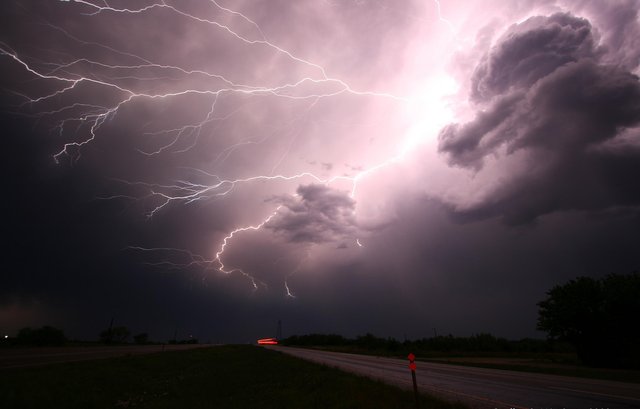Storms Will Help Protect The Electrical Grid From Hackers
The electrical grids are the veins of our modern world. Thus, we should protect them from attack capable of causing gigantic damage. But that is not easy.

- Be also sure to check out my other posts and follow me @kralizec and subscribe to my Youtube channel at Kralizec Gaming Youtube Channel
Our civilization is dependent on electric energy. That is why many hackers – both independent and coming from enemy states – try to gain control over them. This why both governments and regular users would like to see our electrical grids protected. But protecting them is no easy task as they are truly extensive. This is why an independent monitoring system that would watch over them and look for attacks would be a nice thing.
Recently, such a system was proposed by scientists and engineers from the Georgia Institute of Technology and it is truly amazing. It uses the lighting from storms raging thousands of miles far away to monitor the grid. Their radio frequency-based distributed intrusion detection system (RF-DIDS) was recently showcased at the Network and Distributed System Security Symposium in San Diego.
The scientists say that their system is capable of detecting any attack manifested by a change in the magnetic field around the electrical grid’s station components. They already tested the system on two stations and in computer simulations.
So, how does it work? It uses an antenna that is nearby a station. Using the antenna it detects specific radio signals created by the components during use. The system uses a frequency of 60 Hz used by not too many devices – making the operators reasonably certain of what they are seeing. And at the same time, it is independent of systems that currently used to monitor electrical grids.
At the same time, the scientists saw a method on how to out-think their system. The hackers could try to add false signals to mask their attack. And this is when lighting comes into play. Lighting creates spherics in the atmosphere. Spherics are atmospheric radio signals. To be more specific – whenever lighting takes place it among other things created an antenna that radiates an amount of electromagnetic radiation at all wavelengths. While they exist only for a short moment they are also very powerful. This is how spherics are created. Operators monitoring the electrical grid could compare signals the spehric signals from the observed station with signals of spherics from other sources.
Reproducing spherics would be incredibly difficult as they are very specific. They only last for about a millisecond and cover a large range of frequencies. As far as we know, there is only a single process that creates similar signals – a nuclear explosion. It is very doubtful that hackers will be able to detonate nuclear bombs at a moments notice to cover their attacks. Plus, that would get its own response very quick.
Sources:
- https://www.sciencedaily.com/releases/2019/02/190226141136.htm
- https://www.news.gatech.edu/2019/02/26/signals-distant-lightning-could-help-secure-electric-substations
- If you like the content I’m producing about science maybe you will like the content I produce about gaming as well! Be sure to check out my other posts!
This post has been voted on by the SteemSTEM curation team and voting trail in collaboration with @curie.
If you appreciate the work we are doing then consider voting both projects for witness by selecting stem.witness and curie!
For additional information please join us on the SteemSTEM discord and to get to know the rest of the community!